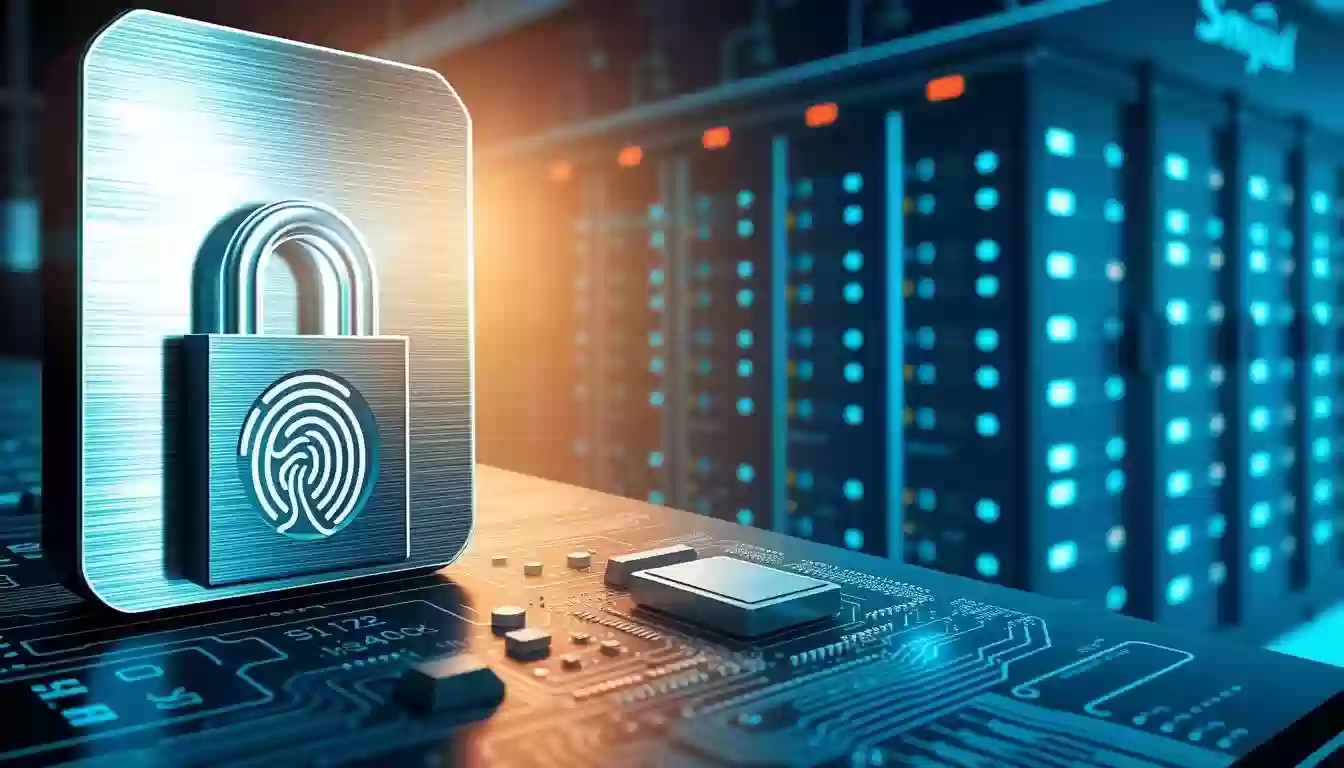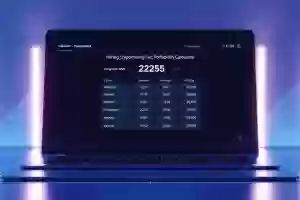Find the Best Crypto Wallet for Your Needs
 04 Mar 25
04 Mar 25
In the rapidly evolving world of digital assets, selecting the right crypto wallet is crucial for secure and efficient management of your funds. Whether you're a seasoned investor or just starting your journey, a reliable wallet is your gateway to safe and direct ownership of digital currencies.
Understanding the differences between hot and cold storage options is essential. Hot wallets offer convenience for frequent transactions, while cold wallets provide enhanced security for long-term asset storage. This guide, based on extensive research and expert insights, will help you navigate the diverse landscape of non-custodial and hardware wallet solutions.
Our analysis covers a wide range of wallets, from user-friendly software options like MetaMask to robust hardware devices like Ledger. We evaluated factors such as security features, supported assets, and ease of use to bring you a comprehensive roundup.
Let's explore the top choices to find the perfect wallet that aligns with your needs and ensures your digital assets remain secure and accessible.
Understanding Crypto Wallets: Hot vs. Cold
When it comes to managing digital assets, understanding the differences between hot and cold wallets is essential. These storage solutions cater to different needs, ensuring your assets remain secure and accessible.
Defining Hot Wallets: Quick Access and Convenience
Hot wallets are connected to the internet, offering rapid transaction capabilities. They are ideal for frequent use, such as active trading or everyday transactions. User-friendly interfaces make them accessible to all users.
Examples include software wallets like MetaMask and mobile apps, which provide instant access to your funds. However, their internet connectivity poses higher security risks, making them less suitable for large amounts.
Exploring Cold Wallets: Security and Long-Term Storage
Cold wallets store assets offline, significantly enhancing security. They are perfect for long-term storage, protecting against hacking and unauthorized access. Examples include hardware wallets like Ledger and paper wallets.
While setup may be more involved, cold wallets offer superior protection. They are recommended for substantial investments, providing peace of mind for those prioritizing security.
How Crypto Wallets Work: Key Concepts and Functionality
Understanding how digital wallets operate is crucial for managing your assets securely. At the core of every wallet are private and public keys, which enable secure transactions and ownership verification.
Private and Public Key Fundamentals
A private key is like a password, granting access to your funds. It must be kept confidential to prevent unauthorized access. Conversely, a public key is shared publicly, allowing others to send you funds without exposing your private information. Wallets generate these keys using advanced algorithms, ensuring uniqueness and security.
Transaction Signing and Verification Processes
When making a transaction, your wallet uses the private key to create a digital signature. This signature is then broadcast to the blockchain, where it's verified using your public key. This process ensures the transaction's authenticity without revealing your private key, maintaining security and trust in the network.
Modern wallets simplify this process, handling key management and transaction verification seamlessly. This blend of security and convenience makes managing digital assets accessible to everyone.
Expert Roundup: Best Hot Wallets for Modern Traders
For active traders seeking convenience and accessibility, hot wallets are the go-to solution. Experts recommend two standout options: Coinbase Wallet and MetaMask. Both offer unique features that cater to different trading needs.
Coinbase Wallet: User-Friendly for Beginners
Coinbase Wallet is celebrated for its intuitive design, making it perfect for new users. Its multi-signature support adds an extra layer of security, ensuring your assets are protected. With seamless integration with the Coinbase exchange, users can easily manage their funds. This wallet is ideal for those who prioritize ease of use without compromising on safety.
MetaMask: Optimized for Ethereum and dApps
MetaMask dominates the Ethereum ecosystem, offering deep integration with decentralized applications (dApps). Its robust support for Ethereum-based tokens makes it a favorite among DeFi enthusiasts. The wallet's simplicity and security features have solidified its position as a top choice for traders focused on the Ethereum network.
Both wallets excel in interface simplicity and robust security measures, catering to traders who value both accessibility and safety. Whether you're trading on a crypto exchange or exploring dApps, these wallets provide the tools you need for a seamless experience.
Expert Roundup: Top Cold and Hybrid Wallets Reviewed
When securing digital assets, cold and hybrid wallets stand out for their robust security features. These solutions cater to users seeking both convenience and high-level protection.
Ledger Nano S Plus: Leading Hardware Wallet
The Ledger Nano S Plus is renowned for its advanced Secure Element, a top-tier security feature. It supports over 1,500 tokens, making it a versatile choice for managing diverse assets. Setup is straightforward, guided by a step-by-step process that ensures even newcomers can navigate with ease.
SafePal: Versatile Hybrid Crypto Storage
SafePal combines the best of both worlds, offering software and hardware functionalities. It supports an extensive range of tokens, providing flexibility for users. The wallet's hybrid approach allows seamless transitions between hot and cold storage, ensuring assets remain secure while maintaining accessibility.
Both Ledger Nano S Plus and SafePal excel in their respective domains, offering a blend of security, token support, and user-friendly interfaces. Whether prioritizing long-term storage or active management, these wallets provide reliable solutions for today's digital asset needs.
The Ultimate Non-Custodial crypto wallet Guide
Non-custodial wallets empower users by granting full control over their digital assets without relying on third-party services. This approach ensures that individuals maintain sole ownership of their funds, enhancing security and privacy in the decentralized financial ecosystem.
Benefits of Maintaining Full Control Over Your Assets
Non-custodial wallets operate by storing private keys locally on your device, eliminating the need for intermediaries. This setup ensures that only you can access or transfer your funds, significantly reducing the risk of unauthorized access.
When comparing custodial and non-custodial options, the latter offers unparalleled control and security. Custodial wallets, while convenient, hold your private keys, making them more vulnerable to hacks and centralised point failures. Non-custodial wallets flip this dynamic, placing you firmly in charge of your financial destiny.
Managing a non-custodial account involves a few key considerations. First, always store your recovery phrase securely, as losing it means losing access to your funds. Second, ensure your device is free from malware to protect your private keys. Finally, double-check all transaction details before confirming, as blockchain transactions are irreversible.
Advanced users often prefer non-custodial solutions for long-term security. These wallets minimise counterparty risks and provide a robust framework for managing digital assets independently. Whether you're a seasoned investor or just beginning your crypto journey, non-custodial wallets offer a reliable way to maintain full control over your financial future.
Key Security Features in Crypto Wallets
Modern digital asset management relies heavily on robust security measures to protect sensitive information and ensure safe transactions. Leading hardware wallets, such as Ledger, have implemented cutting-edge technologies to safeguard user funds.
Advanced Security Technologies
Top-tier wallets employ biometric authentication, multi-signature setups, and key encryption to enhance security. These features work together to create multiple layers of protection, making unauthorized access extremely difficult.
| Feature | Function | Benefits |
|---|---|---|
| Biometric Authentication | Uses fingerprint or facial recognition for access | Prevents unauthorized physical access |
| Multi-Signature | Requires multiple approvals for transactions | Enhances transaction security |
| Key Encryption | Encrypts private keys when the wallet is locked | Protects keys from malicious attacks |
Recovery phrases are crucial for regaining access to funds if a wallet is lost or damaged. Storing these phrases securely offline ensures they remain safe from third-party interference.

These security innovations provide users with peace of mind, knowing their assets are well-protected against fraud and unauthorized access.
User Experience and Interface Design
A well-crafted user interface is essential for making digital asset management accessible to everyone. Whether you're using a mobile app or a desktop platform, an intuitive design ensures a seamless experience.
Ease of Navigation and Setup for All Users
Top-tier wallets prioritize user-friendly designs, making it easy for anyone to navigate. For instance, many mobile apps feature one-click navigation, streamlining transactions and setup processes. This simplicity is crucial for attracting both new and experienced users.
When comparing mobile app interfaces to desktop experiences, the differences are notable. Desktop platforms often provide more detailed analytics and advanced features, while mobile apps focus on quick access and on-the-go transactions. Both, however, aim for an intuitive user experience.
Device compatibility plays a vital role in usability. Ensuring that your wallet works smoothly across all your devices enhances accessibility and convenience. A well-designed interface not only simplifies the user experience but also encourages wider adoption by making the technology approachable to all.
By focusing on simplicity and clarity, modern wallets minimize the learning curve. This approach helps users manage their digital assets confidently, whether they're using a mobile app or a desktop application.
Integration with Crypto Exchanges and DeFi Platforms
Modern wallets are designed to streamline interactions with major exchanges and DeFi platforms, offering users seamless access to a wide range of financial tools. This integration enhances accessibility and convenience, making it easier for users to manage their assets efficiently.
Seamless Connection with Leading Exchanges
Wallets like the Bitcoin.com Wallet support multiple cryptocurrencies, including Bitcoin (BTC), Bitcoin Cash (BCH), and Ethereum (ETH). This multi-asset support allows users to buy crypto directly through the app using a connected internet connection, ensuring quick and secure transactions.
Accessing Decentralized Finance Tools In-App
DeFi platforms enable lending, staking, and yield farming directly through wallets. For instance, the Phantom Wallet, designed for the Solana ecosystem, supports SOL and SPL tokens, allowing users to access DeFi tools without needing third-party custody.
| Feature | Function | Benefits |
|---|---|---|
| Token Swaps | Enables direct exchange of tokens within the app | Convenient and saves time |
| Staking | Allows users to earn rewards by locking tokens | Passive income generation |
| Yield Farming | Provides liquidity to DeFi protocols | Higher returns compared to traditional savings |
These features highlight how a connected internet solution enhances real-time market access and liquidity, making modern wallets indispensable for both new and experienced users.
Mobile and Desktop Wallet Solutions Compared
As digital asset management continues to evolve, the choice between mobile and desktop solutions has become a pivotal decision for users. Each platform offers unique advantages, catering to different lifestyles and preferences.
Pros and Cons for On-The-Go versus Home Users
Mobile solutions are ideal for those who need quick access and portability. They enable rapid transactions and are perfect for active traders. However, their convenience comes with higher security risks due to potential vulnerabilities in mobile devices.
Desktop solutions, on the other hand, offer enhanced security and advanced features, making them suitable for users who prioritize safety. They are less portable but provide a more robust environment for managing digital assets.
Entry-Level Features in Mobile Software
Mobile software often includes entry-level features designed for beginners. These features simplify the setup process and provide an intuitive interface, making it easier for new users to navigate the world of digital assets.
Key advantages of mobile solutions include:
- Portability for on-the-go transactions
- Quick access to funds
- User-friendly interfaces
Service Differences Across Platforms
While both mobile and desktop solutions share many functionalities, there are notable differences. Desktop platforms often provide more detailed analytics and advanced security features, whereas mobile apps focus on convenience and speed.
Key considerations for choosing the right platform:
- Security requirements
- Lifestyle and usage patterns
- Need for advanced features
By understanding these differences, users can make informed decisions that align with their specific needs and preferences.
Unlocking Advanced Wallet Features: Staking and Swapping
Modern digital asset management goes beyond storage, with advanced features like staking and token swapping becoming essential tools for users. These functionalities allow individuals to earn passive income and engage in decentralized trading, making their assets work harder.
Earning Rewards Through Staking and DeFi Tools
Staking involves locking up assets to support blockchain networks, offering rewards in return. For example, platforms like Binance provide staking options with yields ranging from 4-6% APY for Ethereum. This feature is particularly appealing for those seeking passive income without active trading.
Navigating In-App Trading and Token Swaps
Token swapping enables users to exchange one asset for another directly within their wallet. This feature, offered by wallets like Crypto.com, streamlines trading and enhances liquidity. Such tools are integral for active traders, allowing them to capitalize on market opportunities efficiently.

These advanced features demonstrate how wallets have evolved into comprehensive financial tools. By integrating staking and swapping, users can maximize their asset utility, making modern wallets indispensable for digital asset management.
Essential Considerations When Choosing Your Wallet
Choosing the right digital asset solution involves several key factors to ensure it meets your needs and provides robust security. Whether you're managing Bitcoin, Ethereum, or other blockchain assets, the wallet you select should align with your lifestyle and investment strategy.
Evaluating Supported Assets and Features
Start by assessing the types of assets the wallet supports. Look for solutions that accommodate a wide range of cryptocurrencies to ensure flexibility. For instance, Ledger and SafePal support multiple assets, making them ideal for diverse portfolios. Additionally, consider the functionality, whether it offers features like staking, token swapping, or integration with DeFi platforms.
Assessing Pricing, Performance, and Service Quality
Evaluate the pricing model and performance benchmarks. Hardware wallets like Ledger Nano S Plus are known for their robust security and ease of use, while software wallets like MetaMask offer convenience for everyday transactions. Customer support is equally important, opt for wallets with responsive service teams to address any issues promptly.
Finally, consult user reviews and expert analyses to gauge real-world performance. Pay attention to ratings and feedback from trusted sources to make an informed decision. By carefully evaluating these factors, you can select a wallet that enhances your digital asset management experience.
Future Trends in Crypto Wallet Technology
As technology advances, the next generation of digital asset solutions is set to revolutionize how we manage our funds. Innovations in cold storage and wallet store integrations are leading the charge, promising enhanced security and user experience.
Innovations Shaping Next-Generation Solutions
One of the most promising trends is the integration of artificial intelligence. AI-powered wallets will offer personalized insights and predictive analytics, helping users make informed decisions. Additionally, biometric authentication is expected to become standard, adding an extra layer of security.
| Feature | Function | Benefits |
|---|---|---|
| AI-Powered Insights | Provides personalized financial recommendations | Enhances decision-making |
| Biometric Authentication | Uses facial or fingerprint recognition | Prevents unauthorized access |
| Cross-Chain Interoperability | Enables seamless transactions across blockchains | Simplifies asset management |
These advancements, including decentralized identity solutions and social recovery features, are expected to simplify the user experience. By 2025, wallets will likely include options for tracking carbon footprints, appealing to environmentally conscious users.
Looking ahead, these innovations will transform how we interact with digital assets, making management more intuitive and secure. The future of asset storage is bright, with solutions that prioritize both convenience and safety.
Conclusion
Selecting the right digital storage solution is a crucial step in managing your digital assets effectively. Whether you prefer the convenience of a hot wallet for frequent transactions or the enhanced security of a cold wallet for long-term storage, understanding your needs is key. Advanced features like staking and token swapping add value, while non-custodial control ensures you maintain full ownership of your funds.
State-of-the-art security measures, such as multi-signature setups and biometric authentication, provide robust protection. These features make modern solutions more secure and user-friendly. For more insights, you can visit Investopedia to explore detailed guides on digital asset management.
When choosing a solution, consider both expert reviews and your own priorities. By aligning your choice with your lifestyle and investment strategy, you can enhance your financial security and accessibility. Stay informed about the latest trends and explore trusted providers to find the best fit for your needs.
FAQ
What is a hardware wallet, and how does it differ from a software wallet?
A hardware wallet is a physical device designed to store your private keys securely offline, offering enhanced security against hacking. Unlike software wallets, which are apps installed on your device, hardware wallets keep your keys isolated from the internet, making them ideal for cold storage.
How do I keep my private keys safe from unauthorized access?
Always store your private keys offline in a secure location, such as a hardware wallet or a safety deposit box. Avoid sharing them digitally or with third parties. Enable additional security features like biometric authentication and multi-signature wallets for extra protection.
Can I use a hot wallet for long-term storage of my digital assets?
While possible, it’s not recommended. Hot wallets are connected to the internet, making them more vulnerable to cyber attacks. For long-term storage, consider using a cold wallet or hardware wallet to keep your assets secure offline.
What is a recovery phrase, and why is it important?
A recovery phrase, also known as a seed phrase, is a series of 12-24 words that can restore your wallet and access to your assets if your device is lost or damaged. Keep it confidential and store it in a safe place to prevent unauthorized access.
How do I choose the best wallet for my needs?
Consider factors like security, ease of use, supported assets, and integration with exchanges. If you’re active in trading, a hot wallet might be more convenient. For long-term storage, opt for a hardware or cold wallet. Always read user reviews and evaluate the wallet’s reputation.
Is it safe to use a mobile wallet for daily transactions?
Yes, as long as you use a reputable mobile wallet with strong security features like encryption and biometric authentication. However, always be cautious of phishing attempts and ensure your device’s operating system is up to date.
What is a non-custodial wallet, and why is it important?
A non-custodial wallet gives you full control over your private keys, meaning you, and only you, have access to your assets. This is crucial for decentralization and ensures that no third party can freeze or seize your funds.
Can I access my assets without an internet connection?
Yes, if you’re using a hardware wallet. These devices allow you to view your assets and even sign transactions offline, enhancing security. However, finalizing a transaction still requires an internet connection.
How do I transfer assets from an exchange to my wallet?
Open your wallet app, generate a deposit address, and copy it. On the exchange, initiate a withdrawal, paste the address, and confirm the transaction. Always double-check the address to avoid sending assets to the wrong location.
What is staking, and can I do it through my wallet?
Staking involves holding and locking up your assets to support a blockchain network and earn rewards. Some wallets, especially software and hardware ones, offer staking features. Check your wallet’s capabilities to see if staking is supported.





























